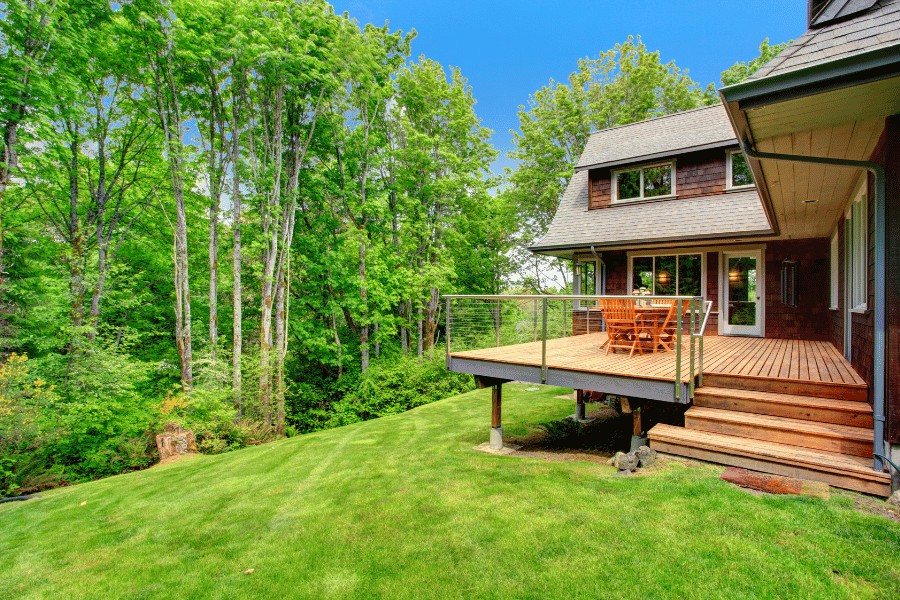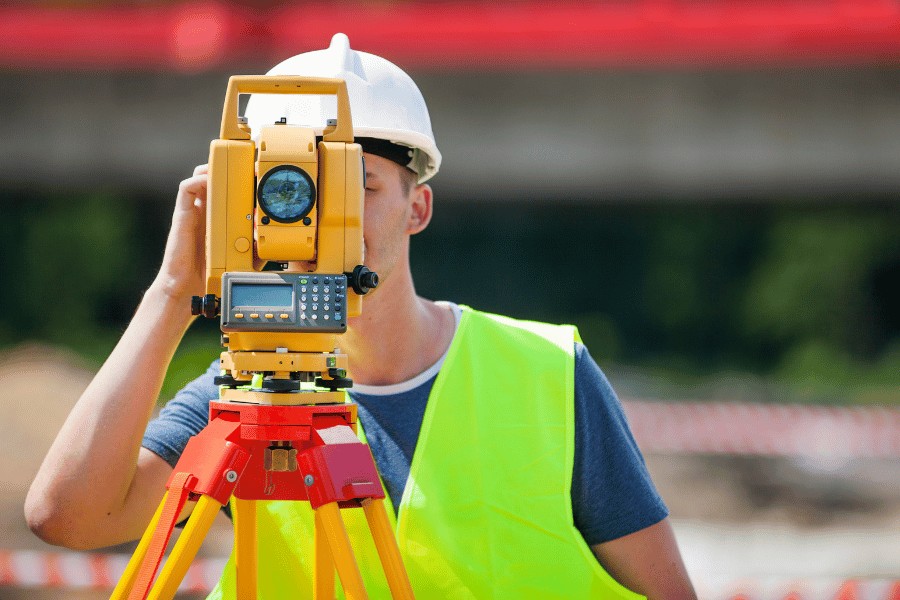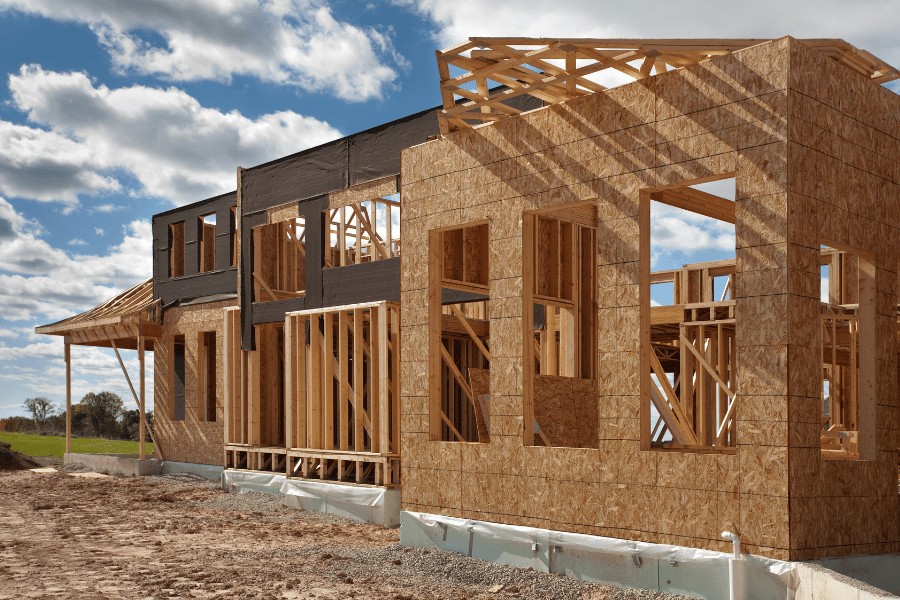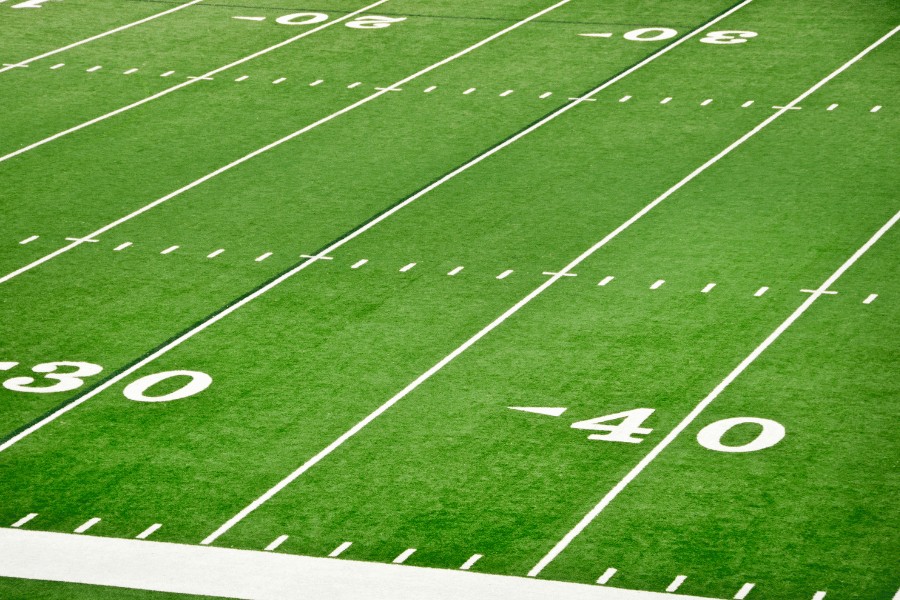How Big Is An Acre? An acre, a fundamental unit of land measurement, equals 43,560 square feet and understanding its size is crucial whether you’re buying property, investing in real estate, or simply curious. At HOW.EDU.VN, we provide expert guidance to help you visualize this measurement and accurately estimate land sizes for better decision-making. Discover how acreage is calculated, its real-world applications, and valuable insights from our seasoned experts, ensuring you’re well-informed on area measurements and maximizing your investment, plus gaining valuable insights for all your land-related questions.
1. Defining the Acre: Understanding Land Measurement
What Exactly Is an Acre?
An acre is a unit of land measurement equal to 43,560 square feet. Understanding this measurement is essential in real estate, agriculture, and land management. Historically, an acre was defined as the amount of land a yoke of oxen could plow in a single day. Today, it is a standardized unit used worldwide.
To put it in perspective, an acre is approximately 90% of a football field, excluding the end zones. It can also be visualized as roughly 16 tennis courts or nine basketball courts. Regardless of its shape—whether rectangular, circular, or irregular—an acre always encompasses 43,560 square feet.
Historical Context of the Acre
The term “acre” has its roots in the Old English word “æcer,” which originally referred to an open field. Over time, its definition evolved to represent a standardized measure of land. In medieval England, the size of an acre was somewhat variable, but it generally corresponded to the amount of land that could be plowed in a day.
Edward I of England played a significant role in standardizing the acre in the 13th century. He defined it as a rectangle that was four rods wide and 40 rods long. Given that one rod is 16.5 feet, this translates to:
(4 rods x 16.5 feet) x (40 rods x 16.5 feet) = 66 feet x 660 feet = 43,560 square feet
This standardized measurement was crucial for ensuring fair land distribution and taxation. The Weights and Measures Acts in England further solidified the acre as a standard unit, which was then carried over to America by English settlers. This historical consistency makes the acre a reliable and universally recognized unit of land measurement.
Acre Conversions: Metrics and Imperial Units
Understanding how an acre translates into other units of measurement can be very useful. Here’s a quick conversion table:
| Unit | Equivalent Value |
|---|---|
| Square Feet | 43,560 sq ft |
| Square Yards | 4,840 sq yd |
| Square Meters | 4,046.86 sq m |
| Hectares | 0.405 ha |
| Square Miles | 0.00156 sq mi |
| Square Kilometers | 0.00404 sq km |




This table allows for easy conversion between acres and other common units, providing a comprehensive understanding of land size across different measurement systems. For instance, knowing that an acre is approximately 0.405 hectares is helpful in regions where the metric system is standard.
2. Methods for Measuring Your Lot Size: From Manual to Digital
1. Manual Measurement
Manually measuring your lot involves physically walking the perimeter of the property with a measuring tool. This method is straightforward but can be time-consuming, especially for larger plots. Here are the steps:
- Prepare Your Tools: You’ll need a measuring tape (preferably a long one) or a measuring wheel, stakes, and a notepad to record measurements.
- Identify Property Lines: Clearly identify the boundaries of your property. Use markers or flags to mark the corners.
- Measure Each Side: Measure each side of the property, recording the lengths. For irregular shapes, divide the lot into smaller, regular shapes (e.g., rectangles and triangles) and measure each separately.
- Calculate the Area: Use the appropriate formulas to calculate the area of each shape. For a rectangle, it’s length x width. For a triangle, it’s 0.5 x base x height.
- Sum the Areas: Add up the areas of all the shapes to get the total area in square feet.
- Convert to Acres: Divide the total square footage by 43,560 to convert it to acres.
Example:
Let’s say you have a rectangular lot that measures 500 feet in length and 350 feet in width:
Area = Length x Width = 500 ft x 350 ft = 175,000 sq ft
Acres = 175,000 sq ft / 43,560 = 4.017 acres
2. Consulting the Property Deed
The property deed is a legal document that contains essential information about your land, including its size and boundaries. To use this method:
- Locate the Deed: Find your property deed among your important documents.
- Find the Property Description: Look for the section that describes the property. This usually includes the lot number, block number, and a detailed description of the boundaries.
- Extract the Lot Size: The deed should explicitly state the lot size in acres or square feet. If it’s in square feet, divide by 43,560 to convert to acres.
The deed provides accurate information and is a reliable source for determining your lot size.
3. Utilizing the Property Plat Map
A plat map is a detailed drawing of a subdivision, showing the boundaries of individual lots. It’s typically recorded with the local government and provides a visual representation of your property.
- Obtain the Plat Map: You usually receive a plat map when you purchase the property. If you don’t have one, you can obtain it from your local county recorder’s office or online through the county’s GIS (Geographic Information System) website.
- Interpret the Map: The plat map will show the dimensions of your lot and its location within the subdivision. It includes boundary lines, easements, and other relevant details.
- Determine the Lot Size: Look for the area of the lot, usually listed in square feet or acres. If it’s in square feet, divide by 43,560 to convert to acres.
4. Professional Survey
Hiring a professional surveyor is the most accurate way to determine your lot size and boundaries. Surveyors use precise instruments and techniques to measure the land.
- Hire a Licensed Surveyor: Find a licensed surveyor in your area. Ensure they have experience with residential properties.
- Schedule the Survey: The surveyor will visit your property and conduct a detailed survey. They will use equipment like GPS, total stations, and drones to accurately measure the land.
- Receive the Survey Report: The surveyor will provide you with a detailed report, including a map of your property, boundary lines, and the exact lot size in acres or square feet.
While this method is the most accurate, it can also be the most expensive. However, it’s worthwhile if you need precise measurements for legal or construction purposes.
5. Pacing as Estimation
Pacing involves walking the length and width of your lot and using your steps as a unit of measurement. It’s the least accurate method but can provide a rough estimate.
- Calibrate Your Pace: Measure the length of your average step. Walk a known distance (e.g., 100 feet) and count your steps. Divide the distance by the number of steps to get the length of your pace.
- Pace the Property: Walk along each side of your property, counting your steps.
- Calculate the Dimensions: Multiply the number of steps by the length of your pace to get the approximate length of each side.
- Calculate the Area: Use the dimensions to calculate the area in square feet, then convert to acres.
Example:
Assume your pace is 2.5 feet. You pace the length of your property and count 200 steps, and the width is 150 steps.
Length = 200 steps x 2.5 ft/step = 500 ft
Width = 150 steps x 2.5 ft/step = 375 ft
Area = 500 ft x 375 ft = 187,500 sq ft
Acres = 187,500 sq ft / 43,560 = 4.304 acres
6. Online Mapping Tools
Online mapping tools like Google Maps and county GIS websites can be useful for estimating lot sizes. These tools allow you to measure distances and areas on a map.
- Access the Mapping Tool: Open Google Maps or your county’s GIS website.
- Locate Your Property: Enter your address to find your property on the map.
- Use the Measurement Tool: Most mapping tools have a measurement feature. Click on the tool and trace the boundaries of your property.
- Obtain the Area: The tool will calculate the area of the traced region in square feet or acres.
These tools are convenient and provide a reasonably accurate estimate of your lot size.
3. Calculating Square Feet to Acres: A Step-by-Step Guide
The Basic Formula
Converting square feet to acres is straightforward with the basic formula:
Acres = Square Feet / 43,560
Examples of Common Conversions
Let’s look at some common conversions to give you a better sense of scale:
| Square Feet | Acres |
|---|---|
| 43,560 | 1 acre |
| 87,120 | 2 acres |
| 130,680 | 3 acres |
| 174,240 | 4 acres |
| 217,800 | 5 acres |
How to Calculate Acreage from Square Footage
To calculate the acreage of your land from square footage, simply divide the square footage of your land by 43,560.
Example:
If you have a piece of land that is 650,000 square feet, the calculation would be:
Acreage = 650,000 sq ft / 43,560 = 14.92 acres
This means your land is approximately 14.92 acres.
4. Factors Influencing the Cost of an Acre: What Drives the Price?
Average Cost of an Acre in the United States
The average cost of an acre of land in the United States can vary significantly based on several factors. According to the USDA, the average cost of an acre in the United States in 2022 was $3,800. However, prices can range from a few thousand dollars in rural areas to hundreds of thousands in prime metropolitan locations.
Location
Location is one of the most critical factors influencing the cost of an acre. Land in densely populated areas or states with high demand, such as New Jersey, Rhode Island, and California, tends to be much more expensive. Conversely, land in less populated states like New Mexico, Montana, and Wyoming is generally more affordable.
Zoning and Land Use
Zoning regulations dictate how land can be used, which significantly impacts its value. Land zoned for residential or commercial use is typically more expensive than land zoned for agricultural or conservation purposes. Zoning laws determine the types of buildings that can be constructed and the activities that can take place on the property.
Accessibility and Infrastructure
The availability of infrastructure such as roads, utilities, and public services greatly affects the cost of an acre. Land with existing access to electricity, water, sewer, and paved roads is more valuable than undeveloped land that requires these services to be installed. The cost of extending utilities to a remote location can be substantial, increasing the overall investment needed.
Topography and Natural Features
The physical characteristics of the land, such as its topography, soil quality, and natural features, also influence its price. Level, well-drained land is generally more valuable than steep, rocky, or swampy terrain. Properties with desirable natural features like waterfront access, mature trees, or scenic views command higher prices.
Economic Conditions
Economic factors such as interest rates, inflation, and job growth can impact the demand for land and, consequently, its price. Strong economic growth and low-interest rates can drive up land prices, while economic downturns can lead to price declines. Market conditions and investor sentiment play a significant role in determining land values.
5. Benefits of Owning Acreage: Privacy, Opportunities, and More
Enhanced Privacy
One of the primary advantages of owning more acreage is the increased privacy it affords. With larger land holdings, there is significantly more distance between you and your neighbors. This spatial separation reduces noise pollution and minimizes unwanted intrusions. The ability to enjoy your property without the constant awareness of nearby residences offers a sense of seclusion and tranquility that is often unattainable in more densely populated areas.
Building and Expansion Opportunities
Acreage provides ample opportunities for building and expansion. Whether you envision adding a guest house, a workshop, or simply expanding your primary residence, having extra land allows you the flexibility to customize your property to meet your evolving needs. This freedom to build and expand can greatly enhance your quality of life and increase the value of your estate.
Outdoor and Recreational Activities
Owning acreage opens up a world of possibilities for outdoor activities and recreation. Whether you’re passionate about gardening, hiking, horseback riding, or simply enjoying nature, having ample land allows you to pursue these interests without leaving your property. You can create your own private trails, set up sports courts, or cultivate expansive gardens, transforming your land into a personal oasis.
Investment Potential
Acreage can be a valuable investment, offering potential for long-term appreciation and diversification. As urban areas become more crowded and land becomes scarcer, the value of large properties tends to increase. Additionally, acreage can be subdivided and sold in smaller parcels, providing opportunities for profit. The versatility and potential for appreciation make acreage a sound investment choice.
6. Commercial vs. Residential Acre: Key Differences
Defining Commercial Acre
A commercial acre refers to the portion of land in a commercial real estate development project that remains usable after accounting for improvements like curbs, sidewalks, and parking areas. This measurement is crucial for developers and investors because it represents the actual space available for building and generating revenue.
Commercial Acreage vs. Standard Acreage
A standard acre measures 43,560 square feet. A commercial acre is typically smaller because it excludes the areas taken up by infrastructure. On average, a commercial acre is about 82.6% of a standard acre, equating to roughly 36,000 square feet. This difference is significant in commercial real estate, where every square foot can impact profitability.
Implications for Development
Understanding the distinction between commercial and standard acreage is vital for planning and development. Developers must consider the usable space after infrastructure is built to accurately assess the potential of a commercial property. This knowledge helps in making informed decisions about building size, parking capacity, and overall project feasibility.
7. Real-Life Acreage Comparisons: Visualizing Land Size
Visualizing an Acre
To help you better visualize an acre, here are some real-life comparisons:
- Football Field: An acre is about 90% of a standard American football field, excluding the end zones.
- Tennis Courts: You can fit approximately 16 tennis courts within one acre.
- Basketball Courts: An acre can accommodate around nine basketball courts.
Relating Acres to Everyday Spaces
Comparing acres to familiar spaces can provide a more intuitive understanding of land size:
- Average-Sized Homes: About 18 average-sized homes (2,438 square feet each) can fit on an acre.
- Parking Spots: An acre can hold approximately 70 parking spots.
- Sedans: You could park about 242 sedans on one acre.
Acres in Famous Landmarks
To put acreage into an even grander perspective, consider these landmarks:
- The White House: The White House grounds cover about 18.7 acres.
- The Statue of Liberty: The Statue of Liberty stands on 12 acres of land.
- The Mall of America: This massive shopping center spans 96.4 acres.
These comparisons help to contextualize the size of an acre, making it easier to grasp and apply in various situations.
8. FAQs: Addressing Your Questions About Acreage
How Big Is an Acre?
An acre is equal to 43,560 square feet.
How Large Is an Acre Visually?
Visually, an acre is approximately the size of a football field without the end zones.
How Many Acres Are in a Square Mile?
There are 640 acres in one square mile.
How Many Homes Can Fit on One Acre?
Developers can often fit around 15 houses on one acre, depending on the size and layout of the homes.
How Can I Measure an Acre of Land?
Divide your property’s square footage by 43,560 to determine its acreage.
What Is an Acre?
An acre is a unit of land measurement representing an area of 43,560 square feet or 4,840 square yards.
What Does an Acre Look Like?
An acre looks like a rectangle that is approximately 88 yards by 55 yards, roughly the size of a football field without the end zones.
How Much Does an Acre of Land Cost?
According to the USDA, the average cost of an acre in the United States in 2022 was $3,800. However, land in bigger states and popular metro areas will be more expensive.
What Affects the Cost of an Acre of Land?
The price can be affected by location, use, zoning, scarcity, and size. Location is a significant factor as an acre of land in the midwest will likely cost you way less than an acre in California or where the cost of living is higher.
What Are the Benefits of Acreage?
The more acreage you have, the more privacy you will receive. There will be more space between you and your neighbors, you won’t hear the people next door, and you won’t have to worry about neighbors seeing into your windows, as they are too far away.
Conclusion: Navigating Land Measurements with Expertise
Understanding how big an acre is and how to accurately measure land is crucial whether you are purchasing property, investing in real estate, or managing land resources. Knowing the historical context, conversion metrics, and various methods for estimating land size empowers you to make informed decisions. The experts at HOW.EDU.VN are dedicated to providing you with the knowledge and guidance needed to navigate the complexities of land measurements.
At HOW.EDU.VN, we understand the challenges you face when seeking expert advice. Finding qualified professionals, managing costs, and ensuring the reliability of information can be overwhelming. That’s why we’ve assembled a team of over 100 distinguished PhDs ready to provide personalized, in-depth consultations tailored to your specific needs.
Ready to Take the Next Step?
Don’t let uncertainty hold you back. Contact HOW.EDU.VN today and experience the peace of mind that comes with expert guidance.
Address: 456 Expertise Plaza, Consult City, CA 90210, United States
WhatsApp: +1 (310) 555-1212
Website: HOW.EDU.VN
Let how.edu.vn be your trusted partner in achieving your goals. Connect with our experts and unlock the potential for success.
